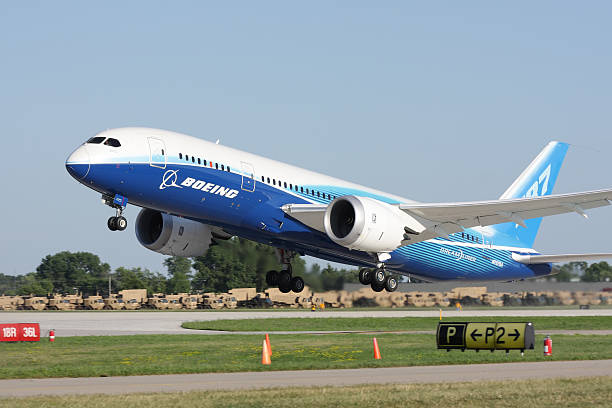The Boeing 787 Dreamliner, long hailed as one of the safest and most innovative commercial aircraft, is facing renewed scrutiny after a fatal Air India crash claimed at least 270 lives, BBC reports.
The incident, which occurred just 30 seconds after takeoff, has prompted investigators to examine the aircraft’s safety record, production history, and the longstanding concerns raised by whistleblowers.
Before the Air India tragedy, the 787 Dreamliner had operated for nearly 15 years without a major accident or fatality. Boeing reported that over 1,100 of the jets are in service globally and had safely carried more than a billion passengers. Its strong safety record helped cement its status as one of Boeing’s flagship aircraft.
However, the Dreamliner has not been free of controversy. Despite its impressive operational performance, the plane has faced multiple quality control issues over the years. Internal whistleblowers have consistently raised concerns about production practices, especially at Boeing’s North Charleston, South Carolina facility.
First launched in 2009, the 787 represented a major leap in aviation technology. It was the first commercial jet built primarily from lightweight composite materials and featured advanced aerodynamics, fuel-efficient engines, and quieter operation. Boeing marketed it as 20% more efficient than its predecessor, the 767, and capable of supporting new direct-route business models for airlines.
Yet shortly after its introduction, the Dreamliner experienced early technical issues. In 2013, a pair of battery-related incidents — including a fire at a US airport and an emergency landing in Japan — led to a global grounding of the fleet until modifications were made.
Over the past decade, production problems have persisted. In 2019, Boeing discovered misalignments and other manufacturing defects, disrupting deliveries and leading to temporary halts in production. These discoveries aligned with claims made by whistleblowers like the late John Barnett, a former quality manager who alleged that defective parts were sometimes installed to keep assembly lines moving.
Barnett and others, including former Boeing employee Cynthia Kitchens and current quality engineer Sam Salehpour, detailed instances of oversight failures, use of substandard parts, and shortcuts in assembly that they feared could undermine long-term safety. Salehpour, who testified before the US Senate, warned of gaps in fuselage joints on many aircraft that he believed could lead to premature fatigue and possible structural failure.
Boeing has repeatedly denied that these issues pose safety risks. In response to Salehpour’s claims, the company stated that they had been thoroughly reviewed by the Federal Aviation Administration (FAA) and did not compromise airworthiness. Boeing said it had implemented corrective measures for past concerns and stood by the structural integrity of the aircraft.
The recent crash of Air India flight 171 has intensified focus on the 787’s safety. The cause of the crash remains under investigation, but the incident has reignited concerns among regulators, aviation experts, and passenger safety advocates.
The aircraft involved was over 11 years old and first entered service in 2013. While its age was not unusual, watchdog groups like the Foundation for Aviation Safety have raised questions about long-standing technical directives — including one involving potential water leaks into electronics bays — that could point to systemic issues.
Still, many experts urge caution. Aviation analyst Richard Aboulafia emphasized that despite the troubling allegations, the 787’s safety record remains among the industry’s best.
“It’s been 16 years of operations, 1,200 jets, and over a billion passengers flown, but no crashes until now,” he noted. “Any serious problems likely would have shown up by now.”
Boeing’s broader reputation has suffered in recent years due to quality and safety issues involving other aircraft, including the 737 Max. The company is under pressure to rebuild public trust and reinforce internal quality controls.
As the investigation into the Air India crash continues, the 787 Dreamliner remains in active service around the world. Industry experts agree that a thorough and transparent inquiry is essential—not only to determine the cause of the crash but to ensure that any potential issues, whether tied to the aircraft, its maintenance, or operations, are fully addressed.
In the meantime, the Dreamliner’s long-standing record offers some reassurance.
“Based on what we do know about the plane,” said aviation consultant Scott Hamilton, “I would not hesitate to get on board a 787.”










The latest news in your social feeds
Subscribe to our social media platforms to stay tuned